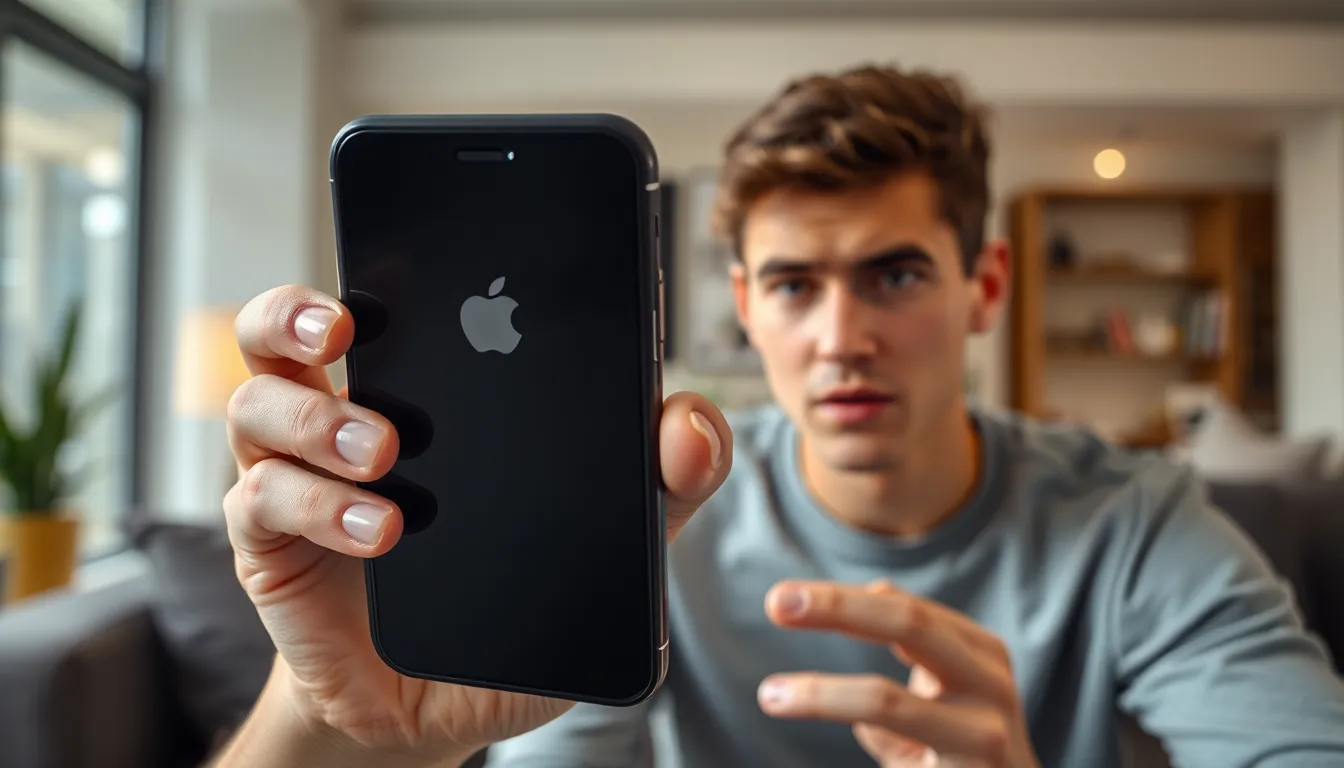Face ID is like having a tiny bouncer guarding your iPhone, ensuring only you can access your precious apps and secrets. But what if that bouncer’s been hitting the gym a little too hard? Maybe you’re tired of the constant facial recognition or you just want to keep your phone a bit more low-key. Whatever the reason, turning off Face ID can feel like trying to get a cat into a bath—challenging but totally doable.
Table of Contents
ToggleUnderstanding Face ID
Face ID functions as a secure method for unlocking iPhones and authenticating apps. Users might choose to disable it for privacy reasons or personal preference.
What Is Face ID?
Face ID is Apple’s facial recognition system that provides secure access to devices and apps. This technology uses advanced sensors and machine learning to recognize a user’s face. Unlike traditional passwords, Face ID offers a convenient, hands-free unlocking method. It also enhances security by ensuring that only the registered user can access their iPhone.
How Face ID Works
Face ID relies on a series of sensors including a TrueDepth camera and infrared capabilities. These components create a detailed 3D map of a user’s face, ensuring accurate recognition even in varying lighting conditions. When an individual looks at their iPhone, the system analyzes facial features and matches them against stored data. If a match occurs, access is granted swiftly, making it a seamless experience.
Why Turn Off Face ID?

Turning off Face ID can enhance personal privacy and address various troubleshooting issues. Users often consider this option to regain control over their device’s security.
Privacy Concerns
Privacy issues frequently arise when using biometric technology. Some individuals worry about unauthorized access to their personal data. Disabling Face ID ensures sensitive information remains protected, especially when privacy is paramount. Various incidents involving data breaches in tech companies can fuel these concerns, prompting users to eliminate potential risks. Relying solely on passwords or passcodes may provide a sense of security that biometric methods can sometimes compromise.
Troubleshooting Issues
Troubleshooting problems can also motivate users to turn off Face ID. Errors during recognition can frustrate many, leading to delays in accessing their devices. Disabling the feature simplifies the unlocking process for those experiencing consistent failures. Users facing issues may also find their phones unresponsive or slow when attempting to utilize Face ID. Switching to a traditional passcode can mitigate these frustrations and enhance user experience, ensuring consistent access without technological hitches.
How Do You Turn Off Face ID on iPhone?
Turning off Face ID on an iPhone is straightforward, with options to disable it for device unlocking or specific applications.
Turning Off Face ID for Unlocking
To turn off Face ID for unlocking the iPhone, navigate to Settings and select Face ID & Passcode. Tap on iPhone Unlock, then toggle it off. Disabling this feature means the device requires a passcode every time it’s unlocked. Users may find this method beneficial for enhancing personal privacy. Individuals also gain better control over their device’s access, minimizing the risk of unauthorized entry.
Disabling Face ID for Specific Apps
To disable Face ID for specific apps, go to Settings followed by Face ID & Passcode. Select the app from the Use Face ID For section and toggle it off. This action prevents the app from using Face ID for authentication and shifts to passcode entry instead. Many users appreciate keeping sensitive applications secure while maintaining convenient access to less critical ones. Customizing these settings enables users to tailor their security measures effectively.
Alternative Security Options
Users can choose from various security methods when looking to turn off Face ID. Two popular alternatives include a passcode and other biometric options, offering different layers of access control.
Using Passcode
Utilizing a passcode serves as a straightforward alternative to Face ID. This method requires entering a numeric code for device access or app authentication. Users can set a passcode by navigating to Settings, selecting Face ID & Passcode, and choosing the option to enable a passcode. Numbers typically range from 4 to 10 digits, ensuring a customizable level of security. Resetting the passcode is easy if forgotten, adding flexibility for users. Many individuals prefer this method due to its simplicity and reliability, especially in situations where Face ID recognition may fail.
Other Biometric Options
Exploring other biometric options provides additional security avenues beyond Face ID. Touch ID is an effective example, allowing users to unlock devices using their fingerprints. Essentially, Touch ID incorporates a sensor that quickly reads and authenticates registered fingerprints. Users can access this feature in supported devices by navigating the same settings area. This method appeals to those uncomfortable with facial recognition technology. Users appreciate its straightforward approach and speed when unlocking devices or making purchases in apps. Another biometric alternative is voice recognition, though it may not be available on all iPhones. Each option offers unique advantages, catering to different user preferences in security.
Turning off Face ID on an iPhone offers users greater control over their device security. By following the straightforward steps outlined in the article, individuals can easily disable this feature and opt for alternatives like passcodes or other biometric methods. This choice not only addresses privacy concerns but also enhances user experience for those who prefer traditional unlocking methods. Ultimately, the decision to disable Face ID reflects personal preferences and the desire for a more tailored approach to device security. Whether it’s for peace of mind or improved functionality, users can confidently manage their iPhone’s security settings to suit their needs.









